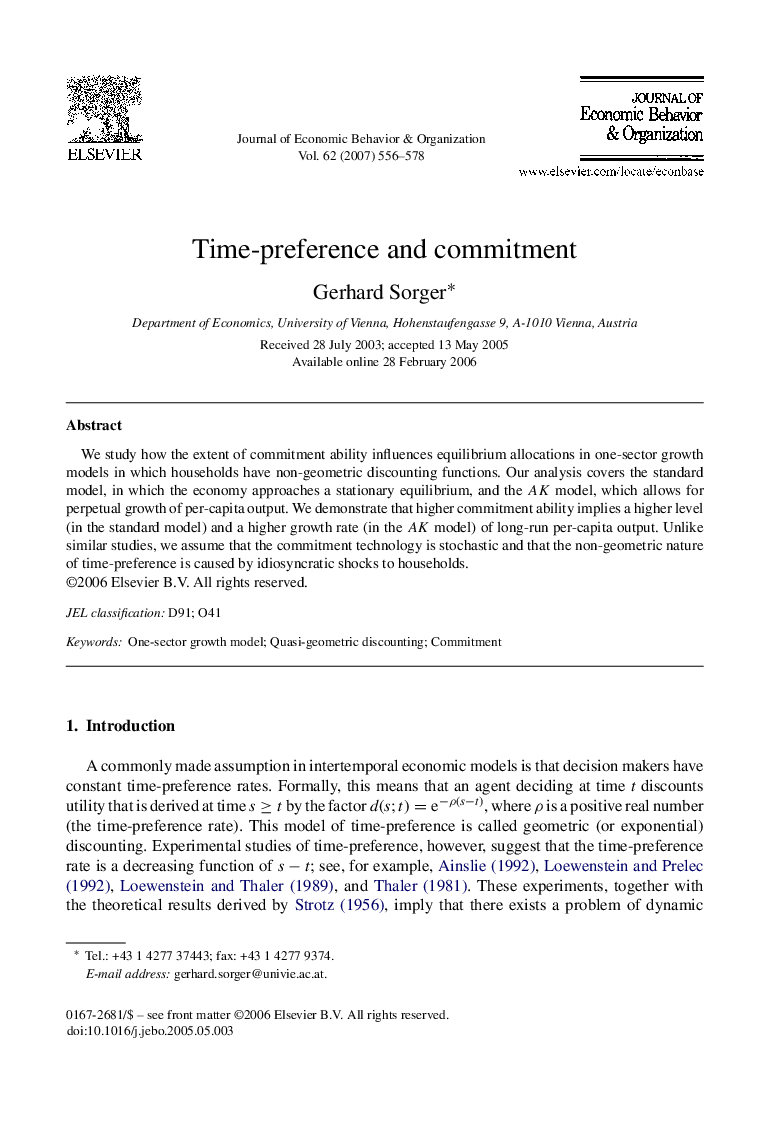| Article ID | Journal | Published Year | Pages | File Type |
|---|---|---|---|---|
| 884544 | Journal of Economic Behavior & Organization | 2007 | 23 Pages |
Abstract
We study how the extent of commitment ability influences equilibrium allocations in one-sector growth models in which households have non-geometric discounting functions. Our analysis covers the standard model, in which the economy approaches a stationary equilibrium, and the AKAK model, which allows for perpetual growth of per-capita output. We demonstrate that higher commitment ability implies a higher level (in the standard model) and a higher growth rate (in the AKAK model) of long-run per-capita output. Unlike similar studies, we assume that the commitment technology is stochastic and that the non-geometric nature of time-preference is caused by idiosyncratic shocks to households.
Related Topics
Social Sciences and Humanities
Economics, Econometrics and Finance
Economics and Econometrics
Authors
Gerhard Sorger,
